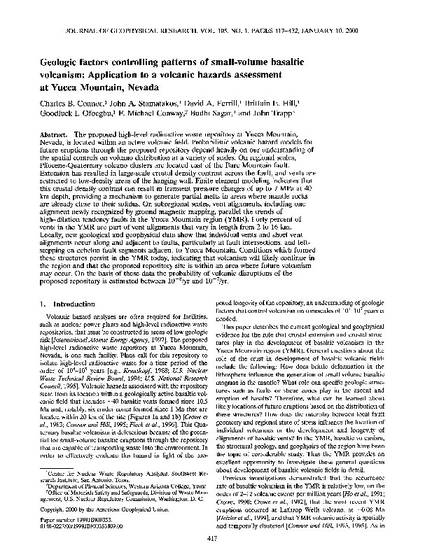
The proposed high‐level radioactive waste repository at Yucca Mountain, Nevada, is located within an active volcanic field. Probabilistic volcanic hazard models for future eruptions through the proposed repository depend heavily on our understanding of the spatial controls on volcano distribution at a variety of scales. On regional scales, Pliocene‐Quaternary volcano clusters are located east of the Bare Mountain fault. Extension has resulted in large‐scale crustal density contrast across the fault, and vents are restricted to low‐density areas of the hanging wall. Finite element modeling indicates that this crustal density contrast can result in transient pressure changes of up to 7 MPa at 40 km depth, providing a mechanism to generate partial melts in areas where mantle rocks are already close to their solidus. On subregional scales, vent alignments, including one alignment newly recognized by ground magnetic mapping, parallel the trends of high‐dilation tendency faults in the Yucca Mountain region (YMR). Forty percent of vents in the YMR are part of vent alignments that vary in length from 2 to 16 km. Locally, new geological and geophysical data show that individual vents and short vent alignments occur along and adjacent to faults, particularly at fault intersections, and left‐stepping en echelon fault segments adjacent to Yucca Mountain. Conditions which formed these structures persist in the YMR today, indicating that volcanism will likely continue in the region and that the proposed repository site is within an area where future volcanism may occur. On the basis of these data the probability of volcanic disruptions of the proposed repository is estimated between 10−8/yr and 10−7/yr.
Journal of Geophysical Research: Solid Earth, v. 105, issue B1, p. 417-432
Copyright 2000 by the American Geophysical Union.
Available at: http://works.bepress.com/charles_connor/71/
